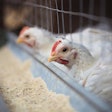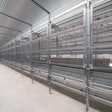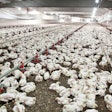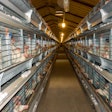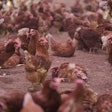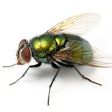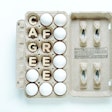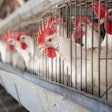The Coalition for Sustainable Egg Supply (CSES), nearing completion of a two-flock research study to better understand the sustainability impacts of various laying hen housing, including cage-free aviary, enriched cage and conventional cage systems, has released preliminary research results.
Over the course of three years, and two separate flocks, the research assessed five areas of sustainability: Animal Health and Well-Being, Environmental Impact, Food Affordability, Food Safety and Worker Health and Safety.
While the initial findings should be treated as preliminary and have not been subject to peer review, they begin to offer some insight into the variables to be considered in selecting different hen housing systems. The coalition’s research will result in meaningful science-based data that will help guide future egg production and purchasing decisions.
Animal health and well-being
Egg production through the first half of the flock cycles for each system remained fairly similar, with production from the aviary system declining most through the remainder of the cycle, in part due to its higher hen mortality. In total, production from the enriched colony system was approximately 3 percent higher than that of the conventional system and 6 to 10 percent higher than production in the aviary system.
The research findings found that pullets reared in the aviary system had better skeletal integrity than those reared in conventional cages. Hens in the aviary and enriched systems had a higher incidence of keel bone deviations and/or fractures than hens in the conventional system.
Conversely, hens in the conventional system had the highest incidence of foot problems, mainly hyperkeratosis. When hens in the aviary did have foot problems, they were more severe than those in the conventional or enriched systems.
Findings also showed that hens in the conventional and enriched systems had cleaner feathers but worse feather cover than aviary hens. Hens with large areas of feather loss lost more body heat than better-feathered hens.
Environmental impact
Research assessed the environmental impact of each of the three systems, including indoor air quality, air emissions, and energy use.
Regarding indoor air quality, daily mean ammonia concentrations were below 15 ppm in both conventional and enriched cage houses throughout monitoring period, but higher ammonia concentrations in the aviary house exceeding 25 ppm resulted from accumulation of some manure on the floor that was not removed until the end of the flock, as well as the building’s low ventilation rate in the winter.
Further, particulate matter (PM) concentrations in the aviary house were roughly eight to 10 times those in the conventional and enriched cage houses, which were by and large similar. Similarly, the aviary system had 6-7 times the PM emissions compared to the other two systems. The higher PM levels and emissions were caused by hens performing activities on the litter floor.
Separate research assessed whether dust from the ammonia and PM concentrations impacts worker or hen health.
Energy use and cost was similar across all three systems. The aviary house required some supplemental heat (from propane) in the first flock, but not in the second flock. In all houses, operation of manure-drying blowers accounted for 55-75 percent of total electricity use throughout different seasons.
Food affordability
Farm costs per dozen eggs were highest for eggs produced in the aviary system, followed by those from enriched housing and then conventional housing.
In total and driven largely by higher feed, labor, pullet, and capital costs, the aviary system was 36 percent more expensive to produce eggs in than the conventional system, while the enriched system was 13 percent more expensive, primarily due to capital costs per dozen, than the conventional system.
Food safety
Eggs from each of the three systems were assessed for quality two days post-lay, as well as after four, six and 12 weeks of cold storage, across multiple parameters, with it being determined that initial egg quality was not impacted by hen housing type, whereas hen dietary nutritional changes did impact egg quality.
Through environmental and shell sampling, the prevalence of Salmonella and Campylobacter was found on collected samples from all three systems, with environmental dust levels influencing shell total aerobes. The aviary forage area and enriched colony scratch pads had the highest levels of total aerobes and coliforms, while aviary floor eggs had the highest total aerobes and coliform levels.
Hens from all housing systems shed Salmonella at a high rate, between 89 and 100 percent. Also, the dry belt manure removal system impeded the detection of Campylobacter, as the manure was no longer a good environment for its detection. It’s important to note that management practices likely had the greatest influence on environmental and egg shell microbiology.
Worker health and safety
Airborne particulate matter inside hen houses, depending on its size, can make its way into workers’ airways, with smaller particles being deposited deep into the lungs. Endotoxins (bacterial toxins), can promote airway irritation and inflammation, as well as decreased lung function.
Sampling from personal exposure monitors worn by workers while in the hen houses, found that inhalable particle and PM2.5 concentrations, as well as endotoxins (bacterial toxins), were significantly higher in the aviary system when compared to those in the conventional and enriched systems, which were not statistically different from each other. It is believed that these levels were highest in the aviary system due to litter (dust-bathing material and manure) left on the floor.
Worker ergonomics were also considered, with a number of tasks standing out as possible risks. Loading and unloading of cages in the conventional and enriched colony systems during population and de-population require extreme body positions, including squatting for an extended time. There was also significant twisting while “herding” the birds and standing on small diameter railings in these two systems.
Gathering eggs that had been laid on the floor in the aviary system was also noted as an issue, as it warranted extreme body positions, including squatting for an extended period of time. Further, extreme arm positions over the shoulder and reaching to the side, as well as rapid and extreme hand and wrist positions were noted. Crawling and lying on the floor to collect floor eggs also exposes the employee to potential respiratory hazards, especially if no respiratory protection is worn, as well as to potential infection hazards to the hands and the knees.
The final analysis, which is scheduled for public release in March 2015, will explore interactions and tradeoffs between sustainability areas within each housing system.
CSES is a multi-stakeholder group collaborating on a commercial-scale study of housing alternatives for egg- laying hens in the U.S. This research and data collection has been conducted on a commercial farm, with all three housing types at the same location.






